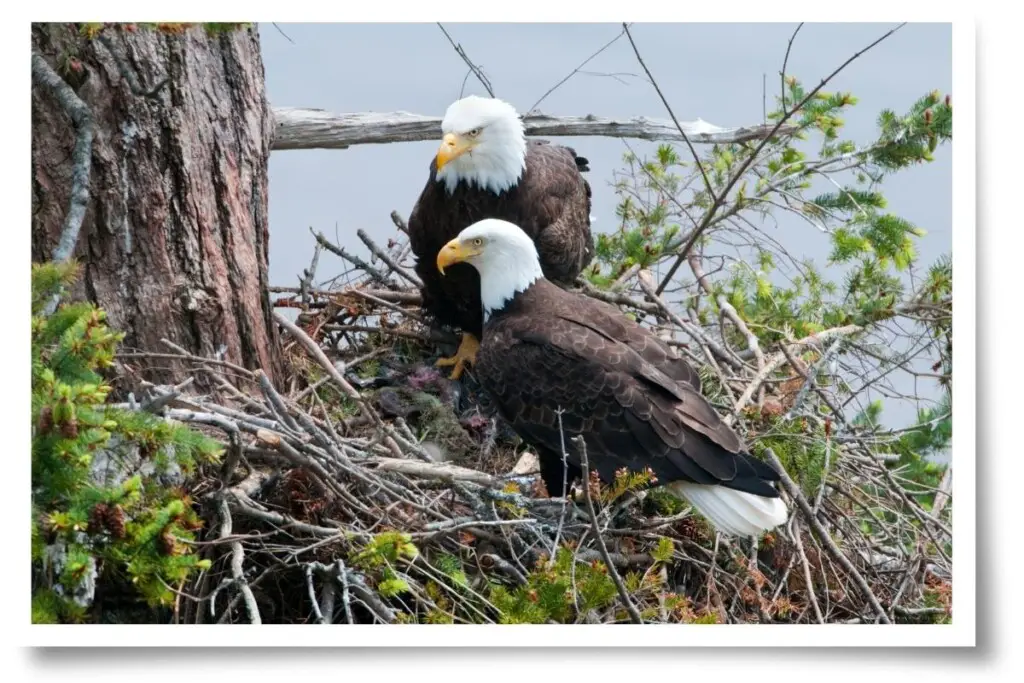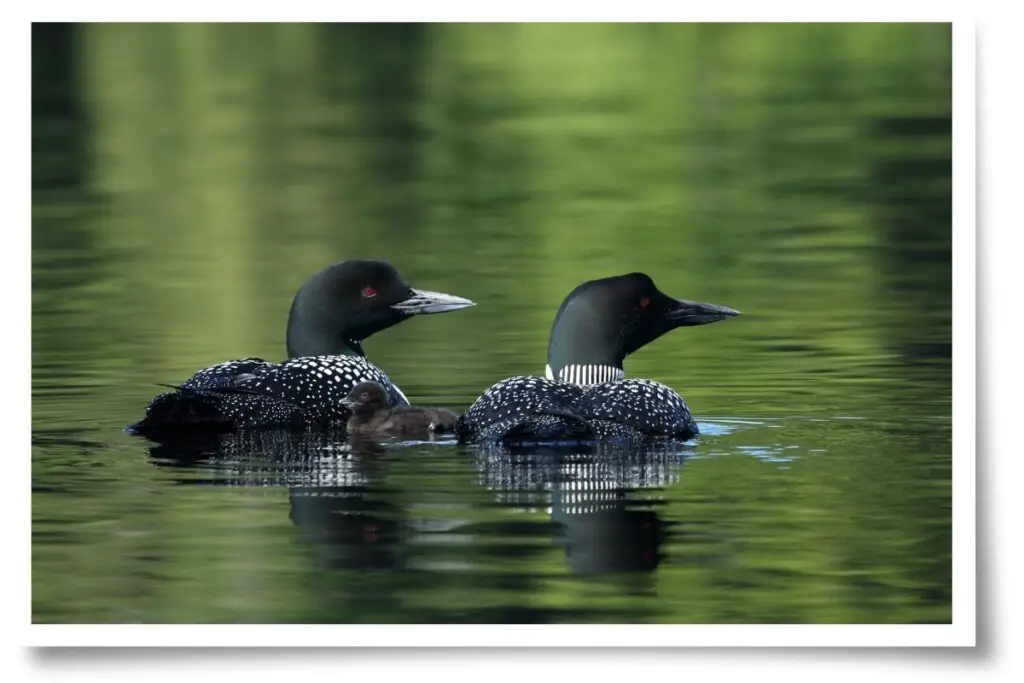As humans, we are no strangers to the world of monogamy; a great deal of us spend our entire lives with one partner. It is often said that many birds mate for life too but is this the case? Here I will present facts from studies and sources across the globe and shed some light on this speculative subject.
Some bird species reported to mate for life are Swans, Geese, Vultures, Eagles, Cranes, and Albatrosses. These birds mate with the same partner year after year, forming what is known as a bonded pair. The mating systems of birds are varied with different forms of monogamy, polyandry, and polygyny.
Continue reading to learn more about the mating systems of birds. We will draw back the curtains on the complex world of avian mating and finally discover if birds do in fact mate for life.

The Complexity Of Bird Mating Systems
Mating in the animal kingdom is driven by a desire to produce the strongest and healthiest offspring that will ensure the continuation of the species.

Humans (yes, we are animals too) tend to dress up our mating system with things like love, commitment, and other embellishments but underneath all of that, we are simply trying to find a mate that will produce optimal offspring.
In the avian world, this base instinct is the driving force behind a very complex mating system.
Do all birds lay unfertilized eggs as chickens do? Find out in this post here on my blog.
Social Monogamy
When individual birds pair off with a member of the opposite sex for one to several breeding seasons, this is called social monogamy. Females in a socially monogamous pair may also copulate with males other than their partner.

Very rarely, pairs will mate exclusively with each other, this is called genetic monogamy. We’ll go into this a little more later in the article.
Social monogamy is broken down into the following categories:
- Mate-guarding monogamy – Male birds remain close to the female to ensure she does not mate with any other male.
- Mate-assistance monogamy – Males help the females to increase the number of offspring reared in a particular breeding season.
- Female-enforced monogamy – Females prevent their partners from seeking other mates.

Why do birds like Bald Eagles fly in circles? Find out here in this article.
Polyandry
This is where a female bird will accept sperm from more than one male in a breeding season.
There are five types of polyandry:
- Male-enforced polyandry – Females are forced to copulate with males that are sexually aggressive.
- Convenience polyandry – Females mate with more than one male as the costs of rejecting secondary suitors are too high.
- Material-benefits polyandry – Females mate with more than one male to secure parental care or resources.
- Fertility insurance polyandry – Females mate with more than one male in case the primary partner is infertile.
- Genetic benefits polyandry – Females mate with more than one male to secure genetically stronger offspring.

Polygyny
This is where the males have loads of fun and can mate with two or more partners.
- Deception-based polygyny – Males behave in a way that makes secondary females believe they are monogamous.
- Female-defense polygyny – Males have a harem of potential mates which they defend against rival males.
- Resource-defense polygyny – Males defend and monopolize valuable resources that attract females.
- Lek polygyny – Males defend a small display territory where they attempt to persuade females to mate with them.
The diagram below by Andrew Leech from the Cornell Lab of Ornithology shows the range of bird mating systems:
Do any birds give birth to live young? You will discover the answer here in this post.
Sexual Selection
Sexual selection is a theory coined by Charles Darwin. It is a special form of natural selection suggesting that certain traits in a bird will become more or less common based on their ability to mate with more or better partners.
This video from The Cornell Lab of Ornithology can explain it in more detail if you’d like to watch it:
So male birds (and females in some cases) develop certain traits that help make them more attractive to the opposite sex, thereby giving them a better chance of reproducing.
This goes back to the desire to produce optimal offspring that I mentioned earlier. So does this lead to the creation of monogamous pairings that remain together for life?
Let’s take Birds Of Paradise as an example. The males in this species develop traits that seem completely over-the-top and impractical to attract a mate. Females are very choosy so when it comes to adornments, the males need to have the best to get the chance to mate.

They are brightly colored which makes them stand out from their environment, or they have hugely elongated feathers which are just not practical in their jungle habitats. These traits have been developed solely to attract a mate.
In most bird species that develop characteristics like this, monogamy is rare. In regards to birds of paradise, most are polygynous where only the females will care for the young. There are a few species, such as the Paradise Crow that are socially monogamous.
Genetic Monogamy
Genetic monogamy is a system where a female mates with only one male; she will not produce offspring with any other male.

Advances in genetic testing techniques have given us the ability to determine the parentage of wild birds. Before these techniques became available, researchers had to visually observe male birds to see how many different females they would mate with. If females mated with more than one male, it was impossible to determine the paternity of those offspring.
This genetic testing allows us to gain proof of birds that mate for life and these may not be species that you would expect…
Are birds reptiles? The answer is right here in this article.
Birds That Are Truly Monogamous
The following species form socially and genetically monogamous pairings. This does not necessarily mean that we can say they “mate for life.” I will explain this later in the post…
Common Loon (Great Northern Diver)

These are one of the five species of loons in the world. They are found in freshwater habitats in North America, Greenland, Canada, Iceland, the United Kingdom, and parts of Europe.
These birds never engage in copulation with any bird other than their chosen partner. Is it romance? We can only guess…
Dovekie (Little Auk)

These birds make monogamy cute! Dovekies are the smallest and most abundant alcid (web-footed diving birds with short legs and wings) in the North Atlantic.
The males of this species are (like typical males) not very keen on monogamy. They will occasionally attempt to copulate with other females however these females will have nothing of it. They do their best to avoid cloacal contact (the cloaca is the sexual organ in most bird species) and the encounter rarely results in the production of offspring.
Red Crossbill

These birds are from the Fringillidae family, which includes Finches, Grosbeaks, and Chaffinches. They are found across a large range that includes North America, Eurasia, and Africa.
A study done on red crossbills by Oddmund Kleven in 2008 found that all the offspring produced by this bird were fathered by the socially paired male.
Florida Scrub-jay

The Florida scrub-jay is found in low-growing scrub on the Florida Peninsula. Because of the habitat requirements of these birds, they are listed as vulnerable on the IUCN red list.
For these birds to pair successfully, they must own a territory. Pair bonds are formed by solicitations and courtship feedings (initiated by either sex). Once paired, they will defend their territory together.
Discover the facts about how birds age in this article here on my blog.
Infidelity and Divorce
We already know that some birds (most, in fact) are promiscuous and will sleep around with various partners when the opportunity arises. “Divorce”, where a mated pair parts ways is also quite common.

Bonded pairs will often break up between or even during mating seasons. This can happen if one of the pair dies or when one or both of them pairs up with others. Usually, the female will take the lead when it comes to switching mates.
Females will often initiate the divorce of a mate because they “find a better option.” If they come across a stronger or more genetically suitable partner, it makes sense for them to abandon the weaker male.
What Does “Mating For Life” Mean In The Avian World
Whether or not birds can be said to “mate for life” really depends on your definition of that term. In my mind “mating for life” means that you choose a mate and do not stray from that partner – even if that partner passes away before you.

In the bird world, if a mate dies, the other bird will simply go off and choose another partner. They will not sit around mourning the loss and remain solitary for the rest of their days.
Likewise, if one bird divorces another, both birds will find another mate. They are driven by their natural desire to reproduce.
In addition, many of the birds known to mate for life that I mentioned at the beginning of the article, may not be genetically monogamous. For example, Black Swans from Australia have been found to be quite promiscuous. DNA paternity analysis showed that one in six signets were “illegitimate” in a study done at Melbourne’s Albert Lake.

It is even possible that Albatrosses do not mate for life either. Laysan Albatrosses on the islands of Oahu and other Hawaiian islands have been discovered creating same-sex pairs.
Female Laysan albatrosses lay only one egg per year however one nest with two females was found to have two eggs in it. This means that they have copulated with males who have then died or they abandoned them to pair with each other. It could also mean that they have reproduced with males who are now bonded with other females.
Conclusion
Do birds mate for life? Perhaps we like to hold onto this idea because it satisfies our romantic dispositions. It may happen in wild birds but as I have presented in this article, studies are proving time and time again that monogamy may be unheard of in the avian world.
I will leave it up to you to do further research if you like. As I am a romantic at heart, I am going to end this article by saying that I think some birds do spend their lives together. I just want to believe they can love.
References
- Birds Of The World – The Cornell Lab of Ornithology
- Handbook of Bird Biology – The Cornell Lab of Ornithology
- The Influence of the Pair-Bond and Age on the Breeding Biology of the Kittiwake Gull Rissa tridactyla – J. C. Coulson
- Secret Sex Lives Of Swans Under Scrutiny In New Study – University Of Melbourne

